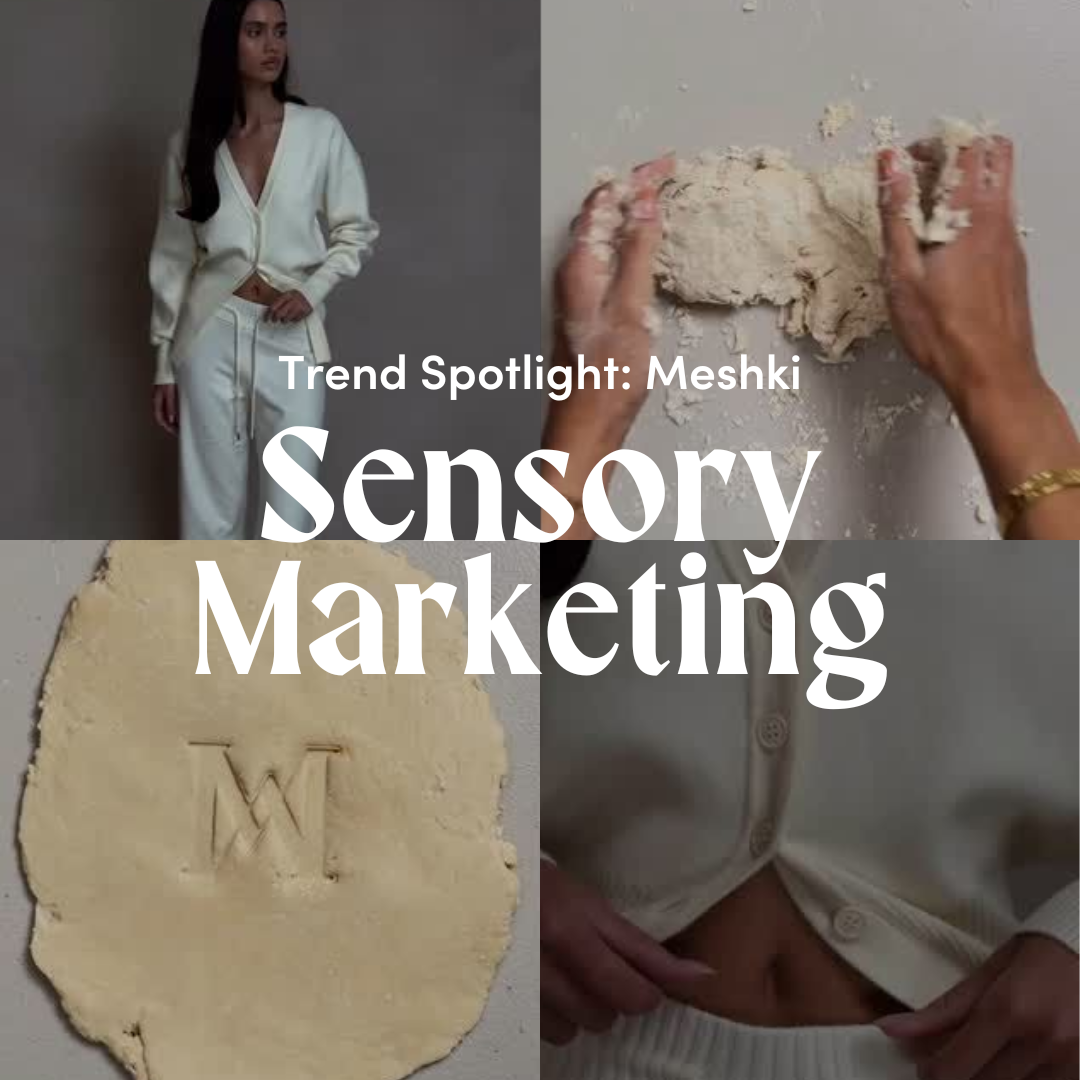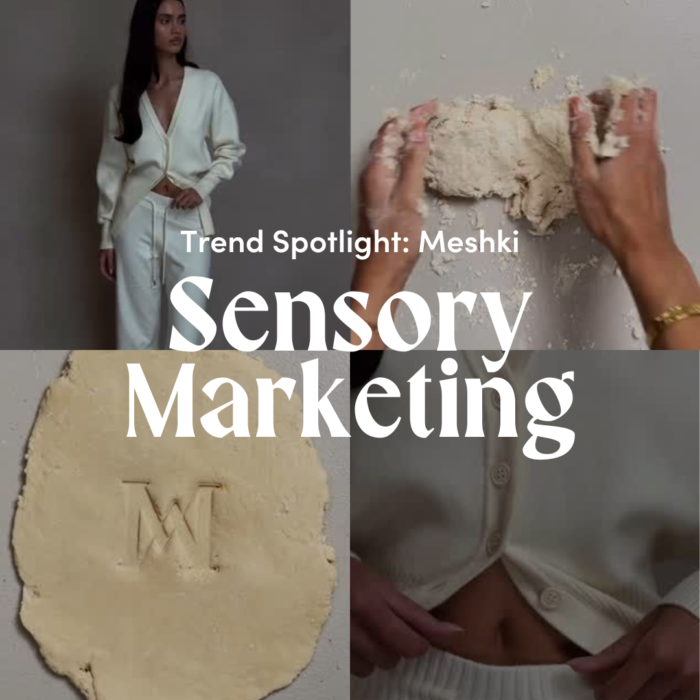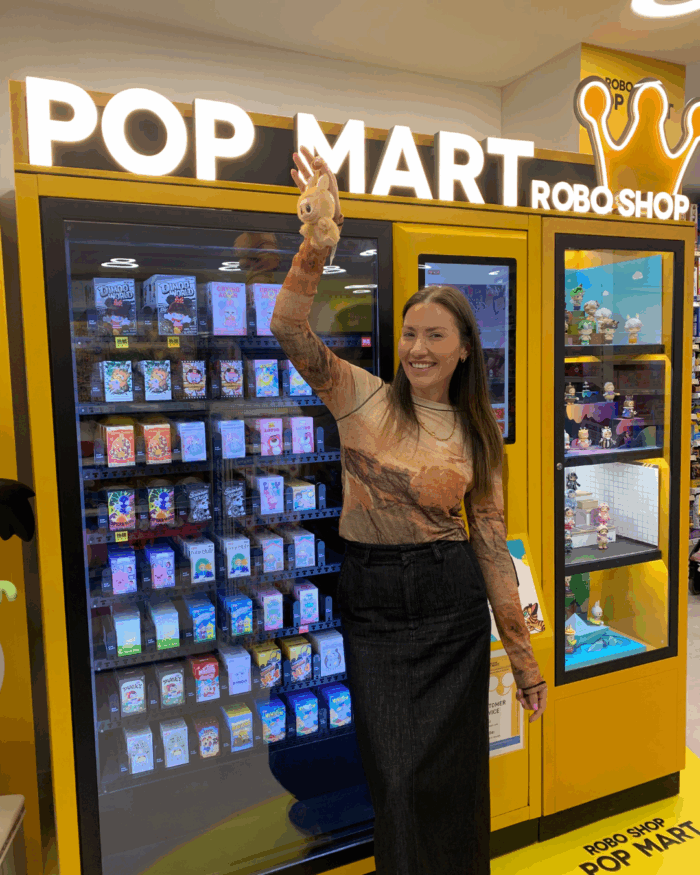In the fast-paced world of social media – where attention spans are fleeting, and content saturation is at an all-time high – standing out is no small feat. Brands looking to thrive must tap into new, immersive experiences to truly captivate their audiences.
Last year, CGI out-of-home (OOH) stunts took centre stage (think: Maybelline’s giant mascara on the tube), but this year? It’s all about sensory marketing. And if there’s one brand absolutely owning this trend right now, it’s MESHKI.
Art You Can Eat
Through an ongoing collaboration with talented food artist and online creator Sibatable, MESHKI has taken sensory marketing to a whole new level, crafting miniature versions of their clothes entirely out of noodles. By riding the sensory marketing wave in a truly unique way, MESHKI has captured its audience’s attention throughout the entire video series, with one Reel alone racking up a staggering 3 million views. It’s emotive, it’s immersive and it’s genius.
Brands Riding the Sensory Marketing Wave
MESHKI isn’t the only brand nailing the art of pairing products with food. If you’ve seen Rhode’s latest marketing – where skincare meets irresistibly indulgent treats – you’ve probably found yourself craving their products as much as a buttery croissant or a drizzle of golden honey on toast.
By engaging all five senses – sight, touch, taste, smell, and sound – Rhode isn’t just showcasing their products; they’re creating an experience. Pairing skincare with indulgent foods like syrup-drenched toast, silky ice cream swirls and cinnamon buns brings texture, ingredients, and even the flavour of their products to life.
Another standout example? The Marc Jacobs x Nara Smith collab that took over our TikTok feeds at the end of last year. In the videos, Nara is seen baking a Marc Jacobs tote bag in her kitchen, tapping into her signature niche of cooking absolutely everything from scratch. This campaign struck the perfect balance between authentic influencer content and innovative product placement – it was incredibly engaging and didn’t feel like an ad at all.
And of course, we can’t talk about sensory marketing without mentioning Glossier. The launch of their Black Cherry collection with a Black Cherry Diner pop-up perfectly demonstrates how a campaign can blend sensory and visual elements to not only showcase new products but also communicate a brand’s identity. The deep red cherry visuals, moody lighting and luxe aesthetics made you feel the richness of the product before even trying it. To top it off, they brought in food creator and supper club host Xanthe Gladstone to curate the experience.
Why Sensory Marketing Works
So, what makes sensory marketing so effective? Let’s break it down:
- It’s memorable. People are far more likely to remember content that engages multiple senses. Whether it’s the visual appeal of food-based fashion or the soothing sounds of ASMR, sensory marketing leaves a lasting impression.
- It sparks an emotional response. Nostalgia, pleasure, desire – sensory cues tap into deep emotions. The comforting aroma of vanilla might transport you back to childhood baking, while glossy textures evoke a sense of indulgence, making skincare feel like a treat rather than just another step in your routine.
- It bridges the gap between online and offline. Sensory experiences bring digital content to life, making it feel more tangible. Whether it’s a colour palette Reel that makes you want to reach through the screen or a pasta dress that makes you rethink dinner, these moments create a connection that transcends the virtual space.
One thing’s for sure; sensory marketing isn’t just a fleeting trend. It’s a powerful way to create immersive, unforgettable brand experiences. And with audiences craving more feeling in their feeds, the brands that embrace it will be the ones that truly stand out.






